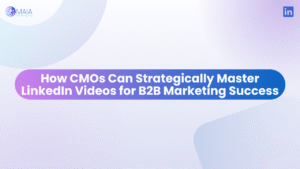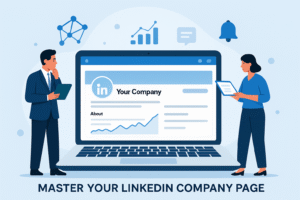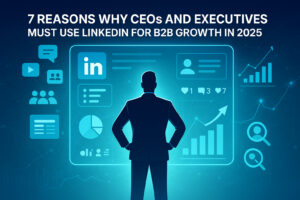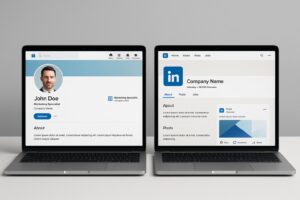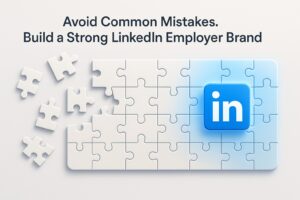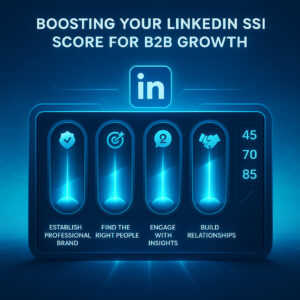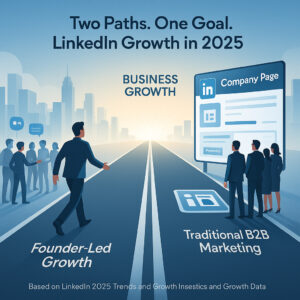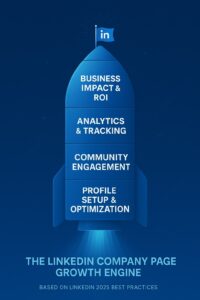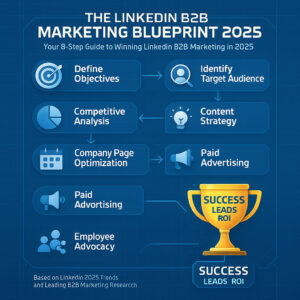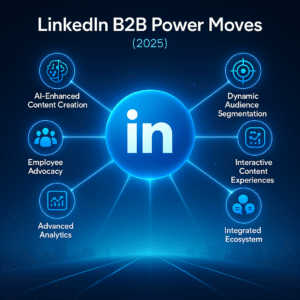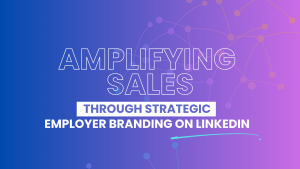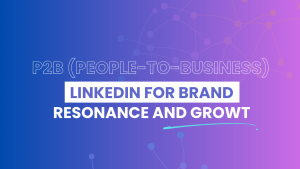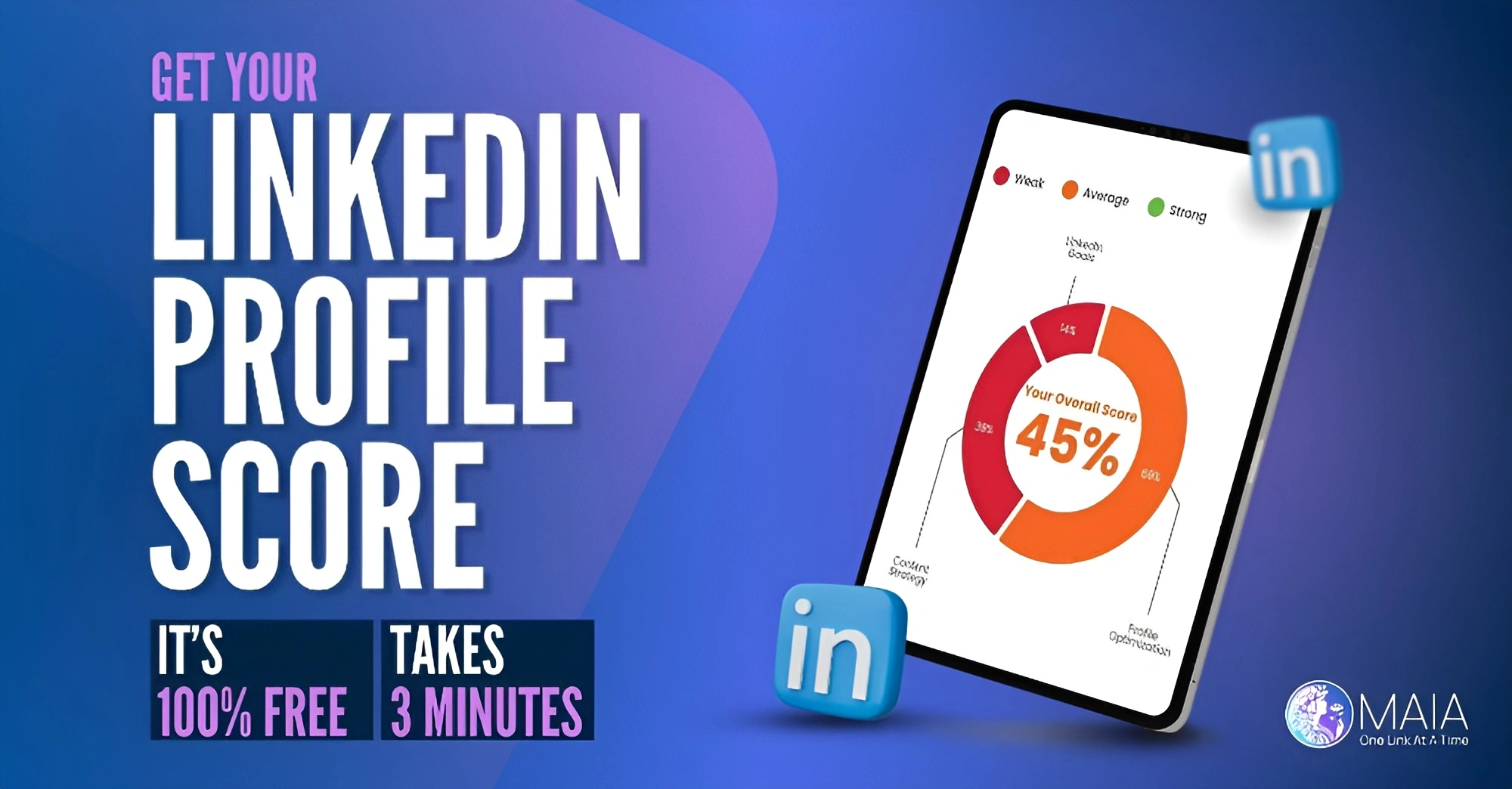Social selling on LinkedIn is transforming the way B2B professionals build relationships, generate leads, and close deals. In today’s digital-first environment, leveraging LinkedIn’s unique platform for meaningful engagement is no longer optional for those looking to stay ahead in sales. This comprehensive guide will walk you through the ins and outs of mastering social selling on LinkedIn, detailing actionable strategies, measurable outcomes, and real-world solutions to common challenges faced by sales teams.
How to Use LinkedIn for Social Selling: Strategies That Work in 2025
Understanding Social Selling on LinkedIn
Social selling is the art of using social networks to find, connect with, understand, and nurture sales prospects. Unlike traditional cold outreach, social selling leverages trust and professional relationships, making it a powerful strategy for the modern sales landscape. LinkedIn, as the world’s largest professional network, is uniquely positioned to support this approach.
On LinkedIn, social selling involves a series of targeted activities designed to build your personal brand, share valuable content, and engage with decision-makers in your target market. This process is not about pitching products immediately; rather, it’s about establishing credibility and fostering authentic relationships that naturally lead to business opportunities.
Key aspects of social selling on LinkedIn include:
- Personal branding: Optimizing your profile to showcase expertise and build trust.
- Content sharing: Posting relevant insights, thought leadership, and success stories that resonate with your audience.
- Strategic networking: Connecting with prospects, clients, and industry peers in a thoughtful and personalized manner.
- Engagement: Commenting, liking, and participating in conversations to stay top-of-mind and demonstrate value.
Social selling is not a one-off tactic, but a consistent, ongoing process. Over time, these efforts help build a strong reputation, create inbound opportunities, and increase the likelihood of closing high-value deals. As modern buyers increasingly research solutions independently, the ability to influence their journey through LinkedIn is more important than ever.
The Importance of Social Selling in Modern Sales
The shift to digital-first sales strategies has made social selling an essential component of any high-performing B2B team. Traditional sales approaches, such as cold calling and email blasts, are becoming less effective as buyers gain more control over their purchasing journey. Instead, professionals are turning to social platforms like LinkedIn to build trust and credibility before initiating direct sales conversations.
Research underscores the effectiveness of social selling. For example, 78% of businesses that use social selling outperform those that don’t. This statistic highlights a clear competitive advantage for organizations that adopt a social selling mindset. The reason is simple: buyers trust people they know and respect, and social selling enables sales professionals to build these relationships at scale.
Furthermore, Sales professionals who use social selling close 40-50% more new business than those who don’t. This dramatic difference is attributed to the ability of social sellers to identify and nurture prospects throughout the decision-making process, rather than relying solely on transactional outreach.
LinkedIn, in particular, offers several advantages for social selling:
- Access to decision-makers: LinkedIn’s vast database allows sales professionals to directly reach executives and influencers in virtually any industry.
- Insight into buyer intent: User activity, shared content, and engagement patterns offer valuable clues about a prospect’s interests and readiness to buy.
- Enhanced conversion rates: Audiences exposed to brand messages on LinkedIn are six times more likely to convert.
In summary, social selling on LinkedIn is not just a trend—it’s a necessity for those who want to achieve sustainable growth and remain relevant in a rapidly evolving marketplace.
Key Strategies for Effective Social Selling on LinkedIn
Maximizing the potential of social selling on LinkedIn requires a strategic approach that integrates personal branding, targeted networking, value-driven engagement, and data-informed outreach. Below are the most critical strategies for success:
1. How Can You Optimize Your LinkedIn Profile for Social Selling?
Your profile is often the first impression you make. Ensure your headline, summary, and experience sections clearly communicate your expertise and the value you offer. Use a professional photo, incorporate keywords relevant to your target audience, and highlight achievements that resonate with potential clients.
2. Who Should You Connect With to Boost Social Selling?
Connect thoughtfully with industry professionals, decision-makers, and influencers. Avoid generic connection requests—instead, personalize your invitations with a clear reason for connecting. Over time, nurture these relationships by staying engaged and offering genuine value.
3. What Content Should You Share to Build Credibility?
Consistently post content that educates, informs, or inspires your target audience. This can include industry news, original articles, case studies, or client success stories. Make sure your content aligns with the challenges and objectives of your prospects. Engaging content not only demonstrates expertise but also keeps you visible in your network’s feed.
4. How Can You Engage Authentically with Your Audience?
Engagement is more than just posting content—it’s about starting and joining meaningful conversations. Comment on posts, answer questions, and offer helpful suggestions. This positions you as a trusted advisor rather than just another salesperson.
5. Leverage LinkedIn Sales Navigator
Sales Navigator is a powerful tool for identifying and targeting the right prospects. Utilize its advanced search filters to hone in on your ideal buyers, receive real-time insights, and track engagement. This enables more personalized and effective outreach.
6. How Can You Personalize Your Outreach for Better Results?
When reaching out to prospects, tailor your messages based on their interests, recent activities, or mutual connections. Avoid generic sales pitches—focus on how you can help solve their specific challenges. Personalized outreach is far more likely to elicit a positive response.
7. What Metrics Should You Monitor to Improve Performance?
Track your engagement rates, connection growth, and content performance. Use LinkedIn’s analytics features to identify what’s working and where adjustments are needed. This data-driven approach ensures continuous improvement in your social selling efforts.
By implementing these strategies, sales professionals can build a powerful presence on LinkedIn, create valuable connections, and accelerate their sales pipeline. As “Sales professionals with a strong social selling index on LinkedIn have 45% more sales opportunities than those who don’t,” adopting these best practices is crucial for those looking to outperform the competition.
Measuring Success: LinkedIn’s Social Selling Index (SSI)
One of the most effective ways to measure your social selling effectiveness on LinkedIn is through the Social Selling Index (SSI). The SSI is a proprietary metric developed by LinkedIn to assess how well you are establishing your professional brand, finding the right people, engaging with insights, and building strong relationships on the platform.
The SSI score ranges from 0 to 100 and is updated daily. It is based on four key pillars:
- Establishing your professional brand: How well you’ve optimized your profile and shared relevant content.
- Finding the right people: Effectiveness in identifying and connecting with prospects.
- Engaging with insights: Participation in conversations and sharing of meaningful insights.
- Building relationships: Strength and depth of your network, especially with decision-makers.
Tracking your SSI provides valuable feedback on your social selling activities. Higher SSI scores are strongly correlated with better sales outcomes. For instance, Sales professionals with a strong social selling index on LinkedIn have 45% more sales opportunities than those who don’t. This demonstrates that the SSI is not just a vanity metric, but a powerful indicator of real-world sales performance.
To improve your SSI, focus on:
- Regularly sharing high-quality content.
- Expanding your network with relevant connections.
- Engaging in thoughtful discussions and providing value to your audience.
- Leveraging LinkedIn’s tools to research and connect with prospects.
Review your SSI score periodically and adjust your strategies accordingly to maximize your impact and drive measurable results.
Common Challenges and How to Overcome Them
While social selling on LinkedIn offers significant opportunities, sales professionals often encounter several challenges. Recognizing these obstacles and proactively addressing them can help ensure sustained success.
1. Standing Out in a Crowded Marketplace
With millions of users on LinkedIn, it can be difficult to differentiate yourself from the competition. The key is to develop a unique personal brand and consistently share original, high-value content. Focus on your niche expertise and provide perspectives that are not readily available elsewhere.
2. Building Genuine Relationships at Scale
Automated messages and generic outreach can alienate potential clients. Instead, invest time in researching each prospect and tailoring your communication. Use LinkedIn’s features to find mutual connections, recent activity, and shared interests to personalize your approach.
3. Maintaining Consistent Engagement
Many professionals start strong but struggle to maintain momentum. Set aside dedicated time each week for content creation, engagement, and networking. Utilize LinkedIn’s scheduling tools or third-party platforms to plan your posts and interactions in advance.
4. Measuring ROI and Attribution
Proving the ROI of social selling can be challenging, especially with longer sales cycles. Track key metrics such as SSI, connection growth, engagement rates, and pipeline value generated from LinkedIn activities. As evidence, “31% of sales reps using social selling reported closing deals worth over $500,000 without a single in-person meeting.” This underscores the substantial impact that social selling can have on high-value deals.
5. Adapting to Algorithm Changes
LinkedIn’s algorithms frequently evolve, affecting content visibility and engagement. Stay updated with LinkedIn’s best practices, monitor your analytics, and be ready to adjust your approach as needed.
Overcoming these challenges requires a blend of persistence, adaptability, and a commitment to providing authentic value to your network. Agencies like https://team-maia.com/ specialize in helping organizations navigate these complexities and maximize their social selling performance.
FAQs on Social Selling on LinkedIn
- What is social selling and how does it differ from traditional sales?
Social selling is the process of using social networks, like LinkedIn, to connect with prospects, build relationships, and provide value before making a sales pitch. Unlike traditional sales, which often rely on cold outreach, social selling emphasizes trust and credibility formed through ongoing engagement.
- How long does it take to see results from social selling on LinkedIn?
Results can vary based on your industry, target audience, and level of activity. Consistent effort over several months typically yields tangible results, especially as your network and reputation grow.
- Is LinkedIn the only platform for social selling?
While LinkedIn is the premier platform for B2B social selling due to its professional focus and robust tools
- Can social selling replace traditional sales methods?
Social selling should complement—not completely replace—traditional sales strategies. The most effective sales teams integrate social selling with phone calls, emails, and in-person meetings to create a holistic approach.
- What metrics should I track to measure social selling success on LinkedIn?
At MAIA, we track two types of metrics: Visibility Metrics and Revenue-Impact Metrics.
Visibility Metrics:
- Profile views (who’s checking you out)
- Post impressions and engagement (likes, comments, shares)
- Follower growth (are you expanding your network?)
- Inbound connection requests (are the right people finding you?)
Revenue-Impact Metrics:
- Inbound leads (DMs, connection requests from prospects)
- Conversations started with qualified buyers
- Meetings booked from LinkedIn outreach
- Deals or partnerships directly tied to LinkedIn activity
How often should I post or engage on LinkedIn for social selling?
Consistency matters more than frequency. At MAIA, we recommend:
- Posting: 2–3 times per week to stay top-of-mind without overwhelming your audience.
- Engaging: Daily. Spend 10–15 minutes commenting thoughtfully on posts from prospects, partners, and industry leaders.
Remember: Your content builds authority. Your comments build relationships.
For founders and executives, our strategy combines both creating visibility while opening conversations that convert into actual pipeline.
In conclusion, mastering social selling on LinkedIn requires a strategic blend of personal branding, targeted outreach, and ongoing engagement. By following the proven strategies outlined above and leveraging tools like the Social Selling Index, sales professionals can outperform competitors and drive significant business growth. As adoption of social selling continues to increase, those who invest in these skills today will be best positioned for tomorrow’s success



